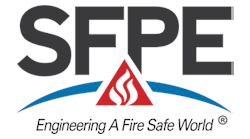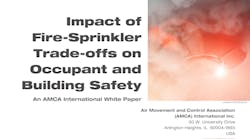Latest from Fire Sprinklers
Sponsored
An overreliance on automatic fire sprinklers at the expense of passive fire-safety features, such as fire, smoke and combination fire/smoke dampers, is thought to be the cause of a measurable decrease in building fire-safety scores since the adoption of the International Codes in 2000, reports a new white paper from Air Movement and Control Association International.
Summarizing research commissioned by the National Association of State Fire Marshals Fire Research and Education Foundation, the white paper, “Impact of Fire-Sprinkler Trade-offs on Occupant and Building Safety,” notes the aggregate building-safety metrics of fire safety, means of egress and general safety have declined since the I-Codes were adopted.
This is believed to indicate a shift in structural trade-offs — in particular, passive building features being traded off for active ones, most notably automatic sprinklers. Most of these trade-offs are put forward based on descriptive explanations lacking scientific quantitative analysis, researchers found.
The use of redundant layers of safety — both active and passive features, in the event an individual system fails to function as designed — is a well-established practice within the safety community and one championed by the NASFM and AMCA.
AMCA white papers are free to download at www.amca.org/whitepapers.


